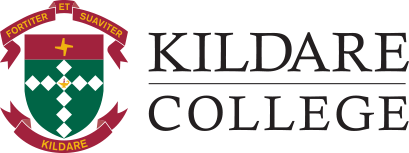After an early start, and a long day of travel the Year 11 and 12 Physics classes arrived at Arkaroola. The journey was punctuated with stops at Pt Augusta, Hawker and then Copley, where the roads turned to dirt and we navigated our way to our final destination of Arkaroola Village.
Day 2 was the Ridgetop Tour, which included looking at radioactive hot spots (which were confirmed with a Geiger counter), a geological seminar and many stops to view the magnificent landscape with our wonderful tour guides. As guests of Doug Sprigg, he generously extended what is usually a half day tour into a full day tour, and we were most appreciative of this opportunity.
Along the tour we came to an interesting anomaly. A hole dug by miners that at some points of the day sucks in air, and at other times expels air. This was a point of the students’ investigation and the students began by looking at the flow rates of the air, checking for radioactive activity, taking the temperature, pressure, and electrical readings to see if they could deconstruct the problem. While the solution has not been explained yet, the students used proper scientific exploration methods to investigate (basically take as many measurements as you can) and will come up with some potential models for the phenomena throughout the coming term. After the tour, some students took some R&R while others went on a hike up to Griselda hill (named after Doug’s mother).
That best part was yet to come. After dinner, the clouds parted, and the night sky twinkled. We were able to identify many of the stars and constellations by eye. This is the true beauty of Arkaroola as it has some of the lowest light pollution in the world. As such, stars that are not normally possible to view in the city were out in force. Through the digital telescope, we were able to view nebulae, globular clusters, spiral galaxies, and giant stars in amazing detail.
The next day our Year 11 students investigated the intensity drop off, of different forms of radiation with respect to distance, while the Year 12 students looked at the relationship between fluorescent intensity of rocks and their temperature. The rocks glow under ultraviolet light and depending on the chemical makeup, will fluoresce at different colours. Interspersed with deep learning were other activities that included escape rooms, fitness and some rest and relaxation to soak up the magnificent environment.
Doug, our host took us on a short hike up to two telescopes, one owned privately and the other owned by NASA. We also saw the giant artwork of a Trilobite made out of rocks, created by Doug’s father. We returned later that evening and using a spectroscopic lens, we looked at the light of the stars, Sirius and Canopus to name a few, and then diffracted the light into its constituents. By doing this we were able to determine the chemical makeup of the distant stars.
Students participated in a moving liturgy, outside with the mountains surrounding us, around a fire while the sun began to set. As the liturgy continued, the stars came out and we had time to reflect on the land, ourselves, and the experiences that we have shared.
Dinner was a barbecue under the stars with the Arkaroola Village. Surrounded by colourful lights, the smell of the food, and good company, the dinner was an absolute delight. Doug gave a speech to the entirety of Arkaroola and was extremely complimentary about Kildare and our wonderful student ambassadors.
Arkaroola was definitely a trip of a lifetime and we would like to acknowledge the support and participation of Kildare staff Anthony Vottari, Tania Pullin and Kim Thomas who willingly attended and worked with the students throughout the trip. We would also like to acknowledge the generosity extended to us by Doug Sprigg. This trip would not have been possible without the sponsorship of.Heathgate Resources. The students were amazing in their engagement, excitement, and their manners. They are a reflection of Kildare and they made us proud.
Nicholas Kellett-Southby
Physics Teacher









































Social